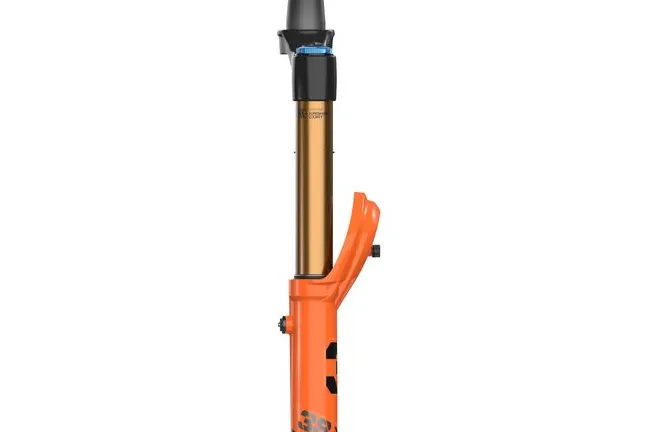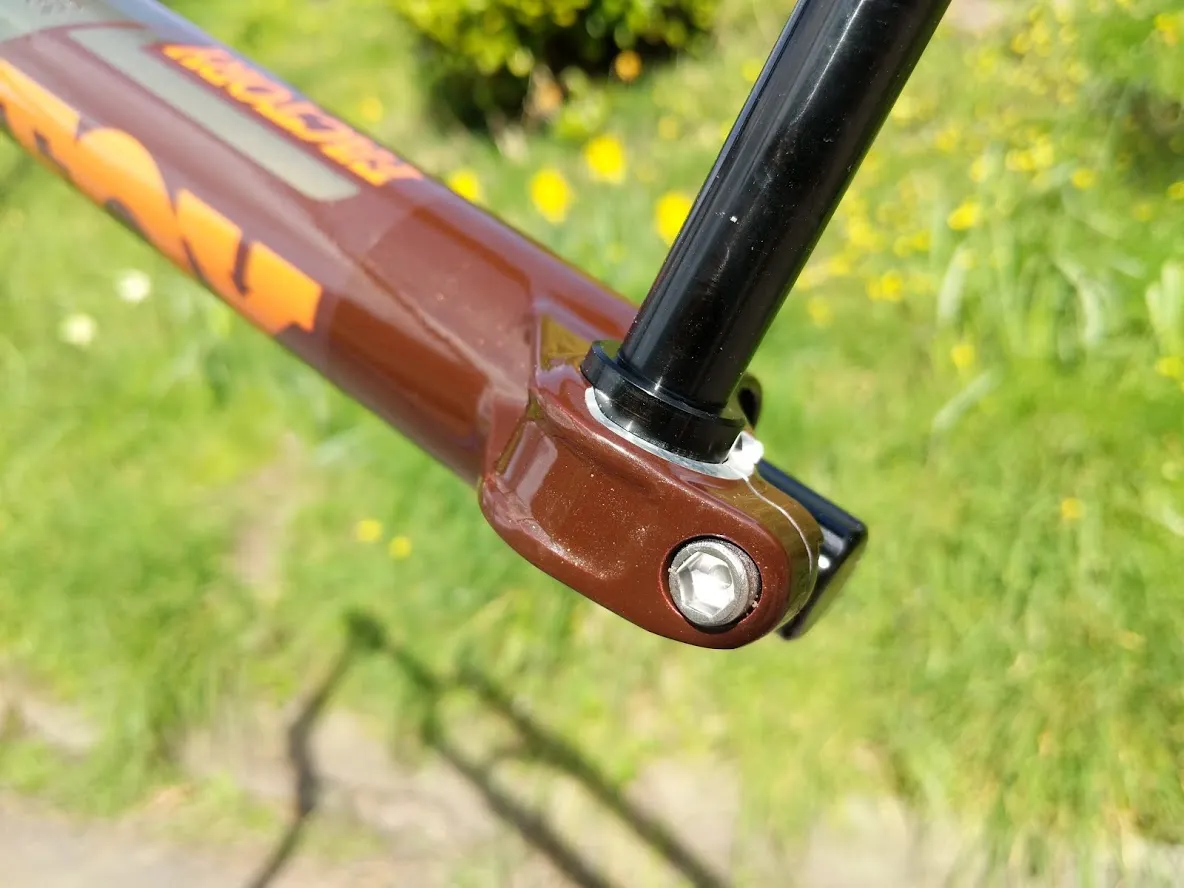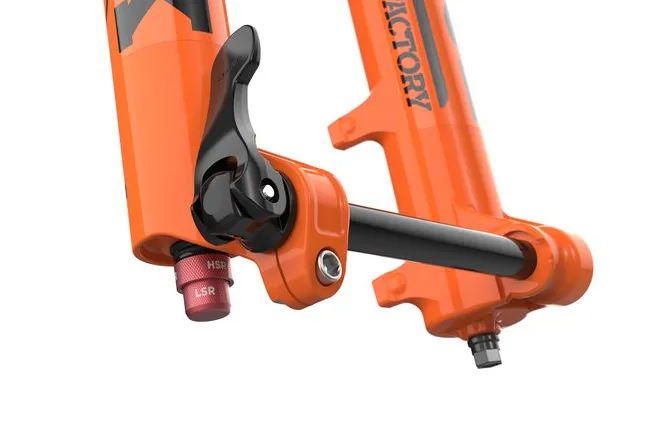After spotting Fox athletes on a new, burly-looking fork, internet-experts have long suspected Fox was working on a new fork with 38mm upper tubes. Well, the pundits were right and the Fox 38 is finally here!
- 2021 Fox Suspension range update overview
- Mountain bike suspension setup: video guides to help you get the most from your bike
More surprisingly, the 36 and 40 have had been completely overhauled too, with several major updates shared with the all-new 38.
Fox’s big-hitting X2 (coil) and Float X2 (air) shocks have been completely redesigned as well. Click here to learn more about those updates.

The imaginatively-named Fox 38 is designed for long-travel enduro bikes. It's available with 160 to 180mm travel, while the new Fox 36 is reduced to 150mm or 160mm options.
Those looking for a 160mm-travel fork will be able to choose the 36 or 38, in which case Fox recommends the 38 for heavy or aggressive riders, particularly those using 29in wheels, due to its stiffer chassis.
The 36 still has a place for the weight-conscious (it's about 150g lighter) or those who prefer the extra compliance offered by the flexier fork.
But the 38 isn't just a scaled-up 36. It's got a range of new features and technologies designed to make it more capable, more adjustable and more supple. Many of these updates are shared with the redesigned 36, while some are unique to the 38.
2021 Fox 38 fork chassis details
Most obviously, the chassis is completely different. Not only are the upper tubes a larger diameter, but the arch, crown, steerer tube and axle are brand new designs.
Elliptical steerer tube tech for stiffer forks
One notable difference is the 38's elliptical steerer tube, designed to increase fore-aft stiffness.
According to Fox, the 38 is 31 per cent stiffer laterally, 17 per cent stiffer fore/aft and 38 per cent torsionally stiffer than the 2021 Fox 36.
The obvious follow-on question to that is how does the stiffness of the 2021 36 compare to previous models? Fox couldn't answer that at the time, but if we learn more we'll let you know.

Another obvious change for Fox is a new, more rounded arch, which increases head tube clearance when the fork bottoms out, while increasing stiffness-to-weight ratio.

Bleed ports and air/oil channels
On the back of the fork, lower leg bleeders are designed to easily release excess air pressure that can build up in the lowers, particularly when riding in hot weather or at altitude. This pressure can otherwise reduce initial sensitivity.
While it is possible to relieve this pressure in any fork by sliding a thin, clean zip-tie behind the wiper seal, the bleed buttons make it much easier. These feature on 2021 Fox 36, 38 and 40 forks.

All three models also share a brand-new feature for Fox, which can be seen on the back of the lower. Air/oil channels (the tapered ridges on which the bleed buttons sit) effectively increase the air volume of the lowers by allowing air to flow past the bushings into the space above.
This extra volume prevents excessive and unavoidable ramp up in force as the fork nears the end of its travel and the air in the lowers is compressed into the small remaining volume. This was arguably an issue on the 2020 GRIP2 36 because the damper takes up more volume than the FIT4 damper.
According to Fox, the channels also allow droplets of lubrication oil to be pushed up to the bushings along with the air, which is forced through the channels. This should make for better lubrication, less friction and slower wear.
A floating axle should compensate for hub width differences
The 2021 forks also share a new floating axle, which is designed to account for manufacturing tolerances in hub widths, allowing the fork legs to remain exactly parallel with any hub, thereby reducing friction.
Believe it or not, hubs are not all exactly the same width. If you have multiple wheelsets you may have noticed that some require a different axle lever position to provide the same tightness. I measured two Boost front hubs I had lying around with a Vernier gauge, and there was nearly 0.5mm difference in width between them.
Most fork axles squeeze both legs together to clamp the hub between them. So, if the hub is out of spec, the legs won't be perfectly parallel, and this creates unnecessary friction and wear.
Fox's floating axle has a stepped collar near the right-hand side. As the axle is tightened, this collar clamps the hub against the left fork leg. The right leg is then free to settle into its neutral position, exactly parallel to the opposite leg when the fork is cycled. The pinch bolt is then tightened down to hold the legs parallel.

Forks will ship with a quick-release version of the floating axle. This isn’t stepped – it’s 15mm all the way along – but is used with a separate, sliding sleeve inside the right leg. The axle pushes on the sleeve, which in turn clamps the hub against the left leg.
The sleeve is then held in place by tightening the pinch bolt. The 15mm QR axle can then be removed and replaced while the sleeve remains locked in position, maintaining the same width while the wheel is removed. When swapping between wheels, you may need to reset the position of the sleeve.
The QR axle weighs about 75g more than the Allen key version, according to Fox.

The QR axle is similar to previous 15mm axes, but a floating sleeve sits inside the lower, which acts like the step in the non-QR axle.
The 38 and 36 are compatible with an optional bolt-on mudguard. Personally, I reckon it's a bit short to do too much good in really foul weather.

The mudguard bolts securely into four holes, but is disappointingly short in my opinion.
2021 Fox 38 fork air spring
The air spring is unique to the 38. Rather than the air piston sealing against the inside of the stanchion wall (like most forks), the 38 uses a separate, narrower air sleeve that sits inside the stanchion.
This is claimed to reduce friction due to smaller internal diameter and therefore surface area, when compared to using the inside of the stanchion wall.
Also, because the separate air spring is somewhat isolated from chassis flex, this is claimed to reduce the side-load on the piston when the fork bends.
2021 Fox 38 fork damper
An updated GRIP2 damper uses VVC (variable valve control) on the compression as well as rebound valving (previous GRIP2 had VVC valving on rebound only).
Most high-speed adjusters work by changing the preload on a spring, which pushes on a shim that holds the valve closed; this spring determines how much damping force is required before the oil can push open the valve and flow past.
VVC works by effectively changing the stiffness of the spring, rather than the preload, thereby allowing the valve to open more smoothly rather than popping open suddenly. This should make for a more linear increase in damping force as the suspension speeds increase, especially when using firmer high-speed damping.
The 38 will also be available with the simpler GRIP damper, which remains unchanged.
2021 Fox 38 models, specifications and prices

- Travel options: 160, 170, or 180mm
- Claimed starting weight: 2,180g
- Measured weight: 2,363g (170mm travel, 29in, uncut steerer)
- Offset options: 37mm (27.5in only), 44mm and 51mm (29in only)
- Damper options: Updated GRIP2, GRIP
- Price: €1,259–€1589 / $949–$1199 / CDN $1249–$1579
- Claimed 31% stiffer laterally, 17% stiffer fore/aft and 38% torsionally stiffer than the 2021 Fox 36. (Fox couldn't say how the stiffness of the 2021 36 compares to previous models.)
- Elliptical steerer tube for improved fore-aft stiffness
- Internal air sleeve air spring
I've got the new 36 and 38 here to test. As soon as we're allowed to ride in anger once again, I'll put them through their paces and see how they compare to the competition.

